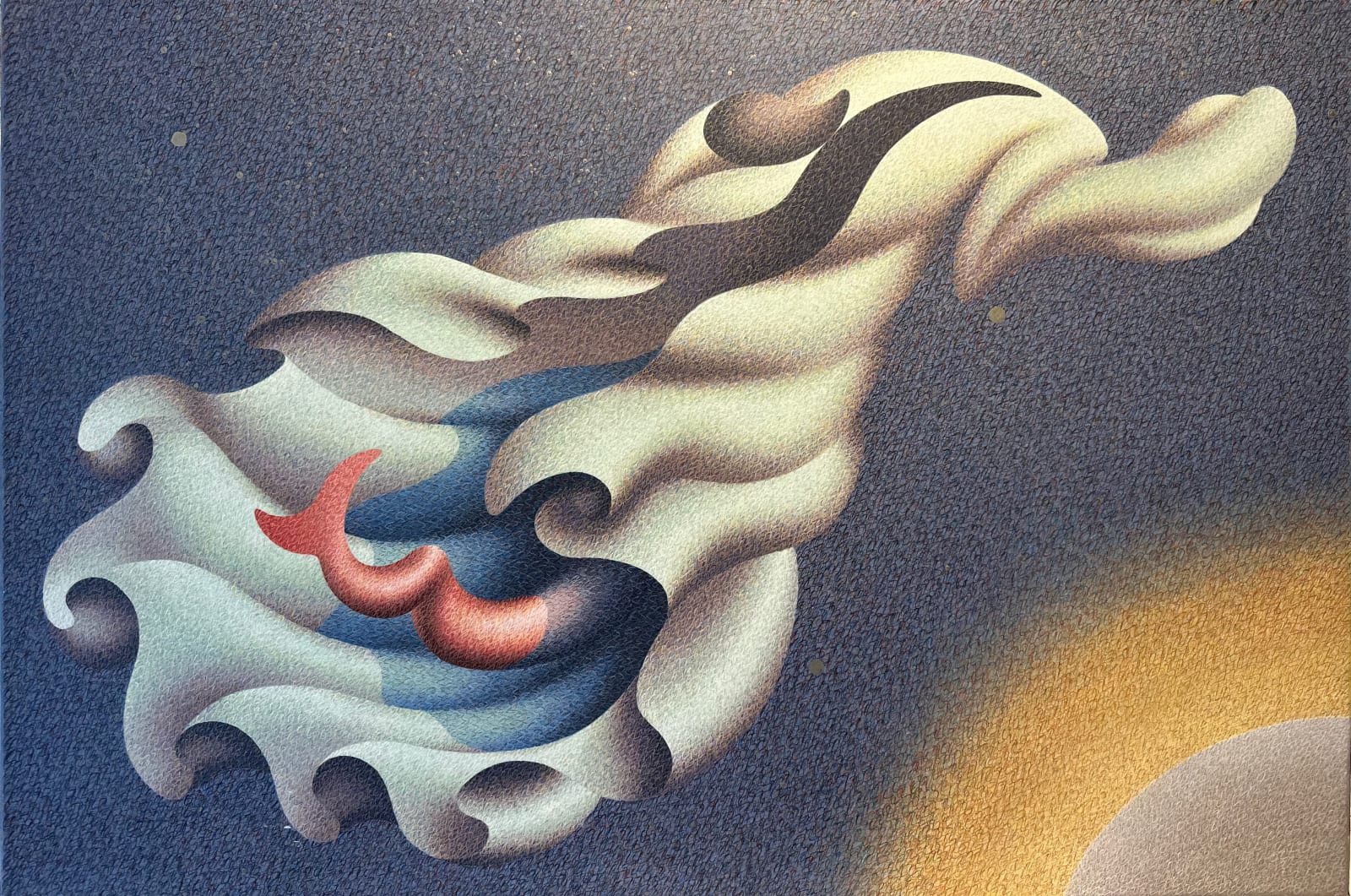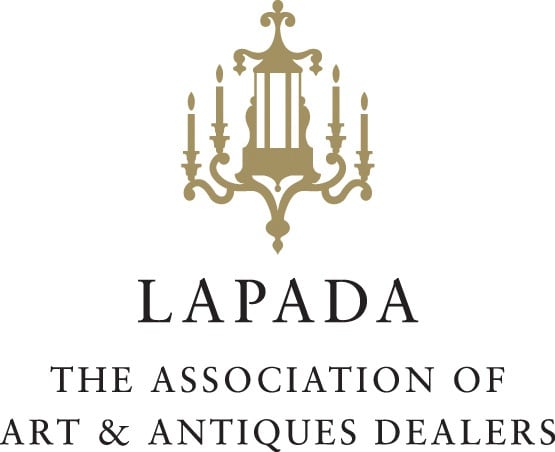Henry Orlik b. 1947
Framed H. 53.5 cm. x W. 76.5 cm., H. 21 in. x W. 30 in.
Further images
A white, old-fashioned night-gown, with two crab-like arms floats, like a cloud, on its back, astral-travelling in space in Dream. The night-gown travels unencumbered and unconfined by body (or head) and there is only a mere suggestion of the physical body. The figure floats like Botticelli’s drawings of Beatrice as she rises to Paradise and is also a conch shell from which a body could rise like Botticelli’s Venus. A red fish tail emerges from beneath the fabric of the night-gown-shell. It is the foot of a person, a mermaid and a fish, part human like a Melusine (a figure in European folkflore which is a woman who is a serpent or fish from the waist down, like a lamia or mermaid, sometimes with wings, tail or both). Below the body, a luxuriant golden halo surrounds a planet around which the body floats.
Like Chagal’s (a fellow Belarussian) or William Blake’s dreaming flying figures, Orlik paints a wonderful picture of the imagination as it takes itself on floating travels, expanding to travel the cosmos. It conjurs ideas of astral travel which is an ancient idea occurring in multiple cultures. It is a dream, an out-of-body experience through which consciousness can travel throughout the astral plane. Emanuel Swedenborg was one of the first modern practitioners to write about out-of-body experience. Helen Keller wrote of her Swedenborian experiences: ‘I have been far away all this time, and I haven't left the room...It was clear to me that it was because I was a spirit that I had so vividly 'seen' and felt a place a thousand miles away. Space was nothing to spirit.’ (Helen Keller, My Religion, 1927).








